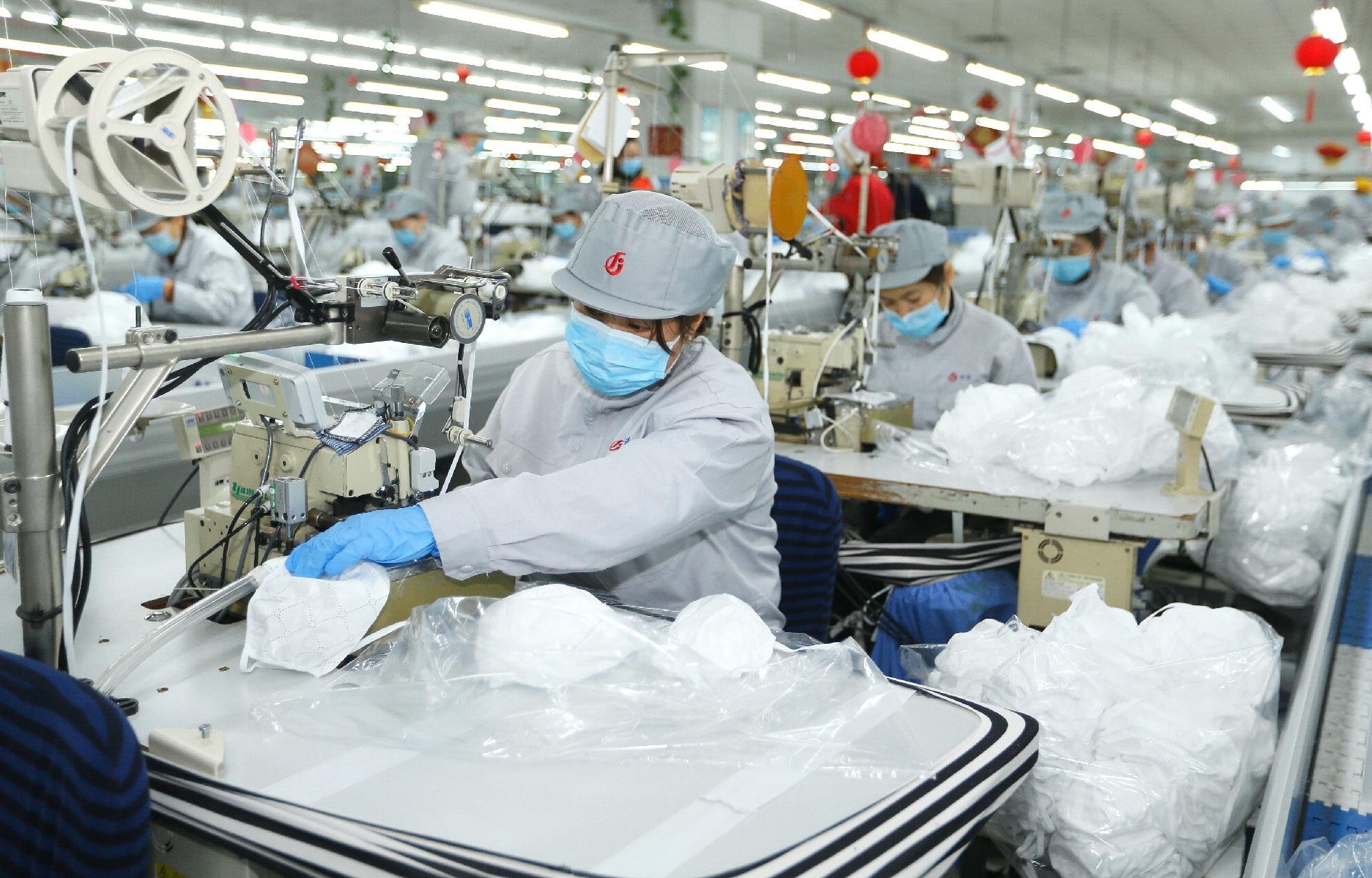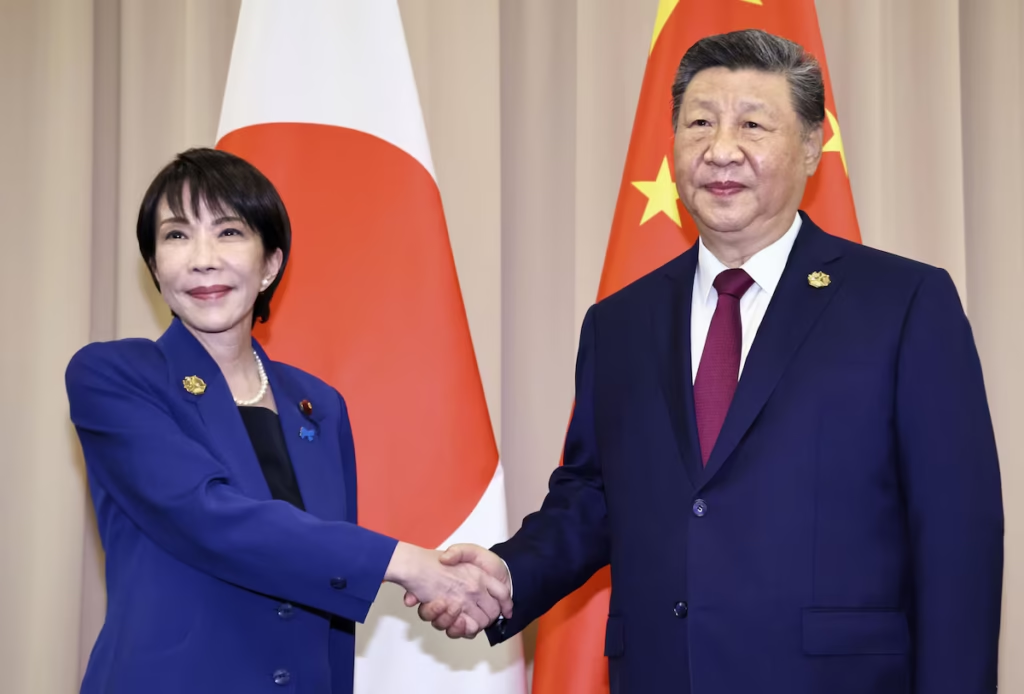Coronavirus and the Chinese Economy

The coronavirus pandemic has hit the Chinese economy hard, with setbacks in key indicators not seen for decades. What will happen in the coming months? How does this current reality and its dynamics impact world economy?
By Alejandro Iturbe Mar/31/2020
Recently, a BBC article reported: “China’s National Bureau of Statistics reported record declines in industrial production, retail or investment in fixed assets, which added to other indexes, anticipate a collapse across multiple domains. ”[…]
“Industrial production (which measures manufacturing, mining and utilities activity) fell 13.5% year-on-year, the first contraction since January 1990. Retail sales, a key indicator of the state of consumption in the second economy worldwide, fell by 20.5% year-on-year, the biggest collapse since recorded. While investment in fixed assets –which reflects expenses in items that include infrastructure, property, machinery and equipment– fell by 24.5% year-on-year, another record decline ”[…]“ According to Trivium research firm’s National Business Index, up until March 16 the Chinese economy was operating at 69.5% of normal production ”[1].
The unemployment rate rose from 5.2% last December to 6.3% in February 2020, the highest level since publication of official records [2].
The Chinese economy hasn’t had such a setback since 1976, when the Deng Xiao Ping leadership defined the beginning of the capitalist restoration process. Today, the economy is ten times bigger than in those years and it has a much more significant weight in the world economy.
The causes
Before the pandemic, the Chinese economy grew 6.1% in 2019, the lowest rate in three decades; It is considered that due to the combination of various elements, a growth in Chinese GDP below 7% represents a “crisis” situation. Meaning the economy was in a “slow crisis” [3].
On this already weakened basis, the measures adopted to face and stop the coronavirus outbreak (between 45 and 50 days of virtual paralysis), affected both production and consumption, which caused an abrupt fall in Chinese economy in the first quarter of 2020, as we saw in previous figures. “Private consumption is the most affected. Shops are closed, or open with reduced hours, and leisure activities have disappeared. Auto sales, for example, plummeted more than 80% in February ”[4].
The Xi Jinping government kept trying to strengthen the domestic market with products manufactured in China, reducing the weight of exports. This situation hinders a turn around, because of the different circumstances.
International impact
The Chinese economy is today the second in the world, with a very strong weight in both sales and purchases in the world market. Therefore, in addition to the decline in the domestic market, this dynamic has a strong impact on the international economy as a whole.
On the one hand, that of supply, because it stopped the external industrial parts supply chain (or drastically decreased it), and led to a near paralysis: “the restrictions have affected the value chains of large companies such as vehicle manufacturers Nissan or Jaguar Land Rover, for example ”[5].
On the other hand, that of demand, from countries where it bought food, raw materials and some industrial products. Those exports were one of the driving forces of those economies, like Brazil and Argentina.
Last week, the São Paulo Stock Exchange fell 7%. This result reflected the impact on industrial companies of the lack of Chinese supplies in production chains, which affects Brazilian industrial exports (electronics and household appliances). “LG suspended the activities of its São Paulo plant in Taubaté for the next 10 days. The same happened with Motorola…. The business chamber of that sector (Abinee) reported that 57% of the associated companies have problems receiving imported materials”[6].
It also impacts agricultural production: “José Ronaldo de Castro, argued that the coronavirus epidemic will affect Brazilian agricultural GDP, to the extent that external demand for meat is reduced.” It is a phenomenon that was registered in Argentina, where the export of the product fell 30% [7].
“With limited growth in China, there will be fewer exports and that impacts large industrial conglomerates like Vale and Petrobras.” This Wednesday, both companies’ stocks suffered the impact: the shares of the Brazilian state oil company fell 9.47%; those of the Compañía Siderúrgica Nacional (steel industry) experienced a collapse of 10.66%. Airlines suffered the mos: GOL’s shares fell 15% and Azul’s almost 14% ”[8].
Chinese government policy
Once the worst part of the pandemic is over, and with the outbreak apparently under control, the Chinese government is taking two steps to recover the economy. First it will apply “stimulus” policies: “Expectations are that the world’s second economy will contract this quarter, for the first time in four decades, so it is anticipated that China will inject hundreds of billions of dollars in stimulus. The Politburo called for expanding the budget deficit, issuing more local and national bonds, reducing interest rates, delaying loan payments, reducing bottlenecks in the supply chain and increasing consumption. China should issue at least 2 trillion yuan ($ 282 billion dollars) in bonds to help the economy, said Robin Xing, Morgan Stanley economist “[9].
Then, it would bet on a “rebound” effect of the economy itself, as it normalizes: “According to the latest official data, 95% of large companies and 60% of small and midsize companies outside Hubei, the most affected province, have already returned to work”[10].
The perspectives
This policy seems to produce the first results in some fields. “The most revealing thing about the Chinese recovery is the massive turnaround of large investment funds from Wall Street and London to the stock markets of the People’s Republic, via Hong Kong. In the last 10 days of February alone, Bloomberg, Barclay and JP Morgan Indices have received more than US $ 10.8 billion, with a total of the People’s Republic bond purchases (in Reminbi) that already exceed US $ 400 billion, and would double in 2021 ”[11].
There are a number of forecasts about the immediate dynamics of the Chinese economy. Some are optimistic, such as those of the government itself, which expects for 2020 growth figures similar to 2019.
“Official media cited experts who are optimistic about economic recovery in the coming months, including Liang Huang, chief economist at the China International Capital Corporation. Liang told the official nationalist Global Times, that “if the situation continues without complications, China is capable of achieving annual GDP growth of 6%” [12].
This forecast is shared by several analysts and imperialist study centers. “The NBS calculation is that economic activity will offer a visible recovery at the end of March, with a second quarter that will have an increase of 4% / 5% per year, which would climb to 6.5% / 7% in the third, to recover the consumption boom in the second half of the year, that it experienced in 2019 ”[13].
Others, on the contrary, have a pessimistic view. Something that begins with an assessment of the impact of the 2020 fall, and continues with an evaluation of GDP recovery possibilities for the rest of 2020. “Given the weak performance in the first two months of the year, Goldman Sachs bank revised its forecast for Chinese economy in the first quarter, from 2.5% growth to a 9% fall. For the year, the bank’s forecast decreased from a 5.5% to 3% growth”[14].
Another analysis along the same lines: “There are those who predict a rebound, and that could happen in the industrial sector, but consumption has been lost. People are not going to start eating six times a day, and activities such as tourism are going to take a hit because vacations have disappeared.”[15]
What can happen to world economy?
In this framework of the possible dynamics of the Chinese economy, analysts also prepare forecasts for world economy. Business consultant McKinsey presents two alternative scenarios, in which “it differentiates between two scenarios: one where there is a rapid recovery, in which the virus is found to be seasonal, and by autumn governments have the tools to stop it; or a global slowdown, in which the virus is not seasonal and countries must maintain prevention measures even if they control the epidemic, as in the case of China ”[16].
Besides a possible “natural recovery”, there is doubt about the impact that the “fiscal stimulus measures applied by governments may have.”The second key point is how governments will try to mitigate the impact of a crisis, since in recent ones, the response has been to cut interest rates to help companies and individuals pay their debts and stimulate demand, as the Bank of England did yesterday, leaving a very small margin to cut even more. Thus, governments would have to address the impact of the coronavirus through fiscal expansion, something very different from the recent past, although the impact is unclear”[17].
The worst-case scenario forecast by UNCTAD (United Nations Conference on Trade and Development) is that “world economy would grow by only 0.5%, with a negative impact of $ 2 trillion of world GDP” [17]. In early March, the OECD (Organization for Economic Cooperation and Development) estimated 0.7, and the World Bank 1.2% [18]. All these institutions, which had already estimated low growth rates in January, have now reduced them.
In reality, we are talking about the start of a global recession. World population grew in 2018 by 1,109 % [19]. In other words, based on that growth, the world economy is actually shrinking. A situation that can merge with the gigantic contradictions accumulated in decades and detonate them.
Notes:
[1] https://www.bbc.com/mundo/noticias-internacional-51916056
[2] https://economia.uol.com.br/noticias/redacao/2020/03/19/impactos-economicos-coronavirus-china.htm
[3] https://www.elmundo.es/economia/2015/10/19/562470fe22601dc45b8b4622.html
[4] https://www.laverdad.es/economia/caida-economica-china-20200308131227-ntrc.html?ref=https:%2F%2Fwww.google.com%2F
[5] See note [1].
[6] https://www.lapoliticaonline.com/nota/124870-coronavirus-la-caida-de-la-economia-china-pego-en-brasil-y-preven-que-arrastre-a-argentina/
[7] Idem.
[8] Idem.
[9] https://negocios.elpais.com.uy/noticias/china-prepara-medidas-estimulo-economico-remision-coronavirus.html
[10] https://www.lavanguardia.com/economia/20200316/474193315948/china-economia-coronavirus-crisis-ventas-fabrica-empresas.html
[11] https://agenciabrasil.ebc.com.br/internacional/noticia/2020-03/economia-da-china-esta-se-normalizando-apos-pico-de-coronavirus
[12] See note [1].
[13] https://www.clarin.com/economia/economia/recuperacion-china-abre-camino-superacion-crisis-global_0_0f_dAQy-k.html
[14] See note [2].
[15] https://www.laverdad.es/economia/caida-economica-china-20200308131227-ntrc.html?ref=https:%2F%2Fwww.google.com%2F
[16] See note [1].
[17] https://www.rankiapro.com/como-afecta-coronavirus-mercado-chino/
[18] https://www.razon.com.mx/negocios/ocde-recorta-a-0-7-pronostico-de-crecimiento-para-mexico-en-2020/
[19] https://datos.bancomundial.org/indicador/SP.POP.GROW




